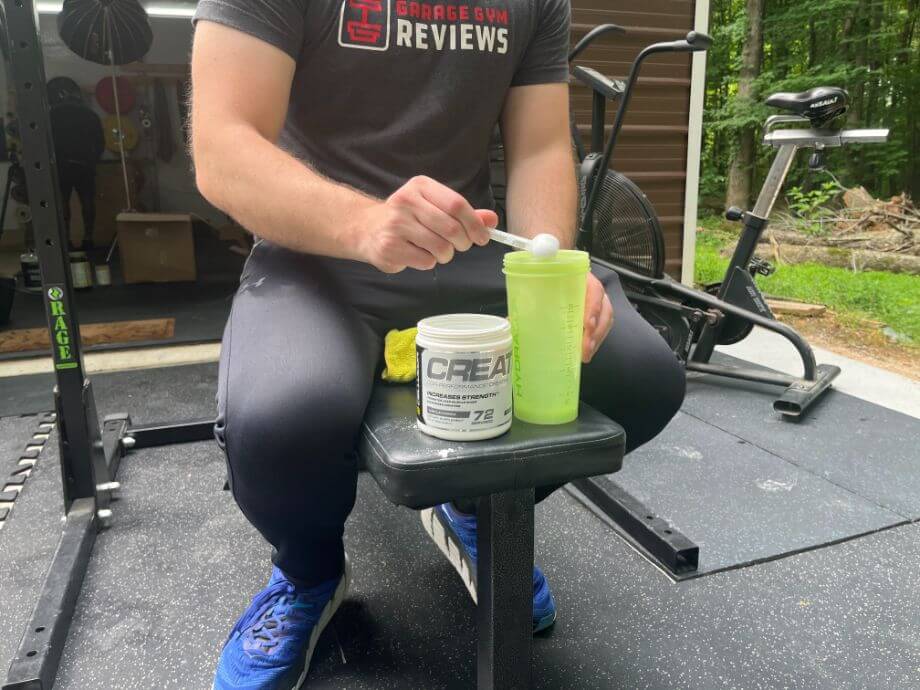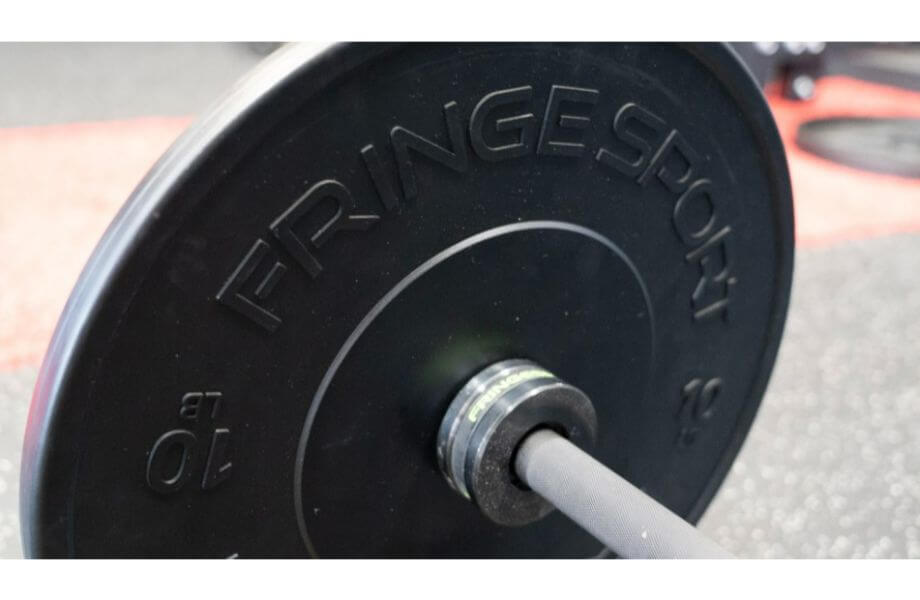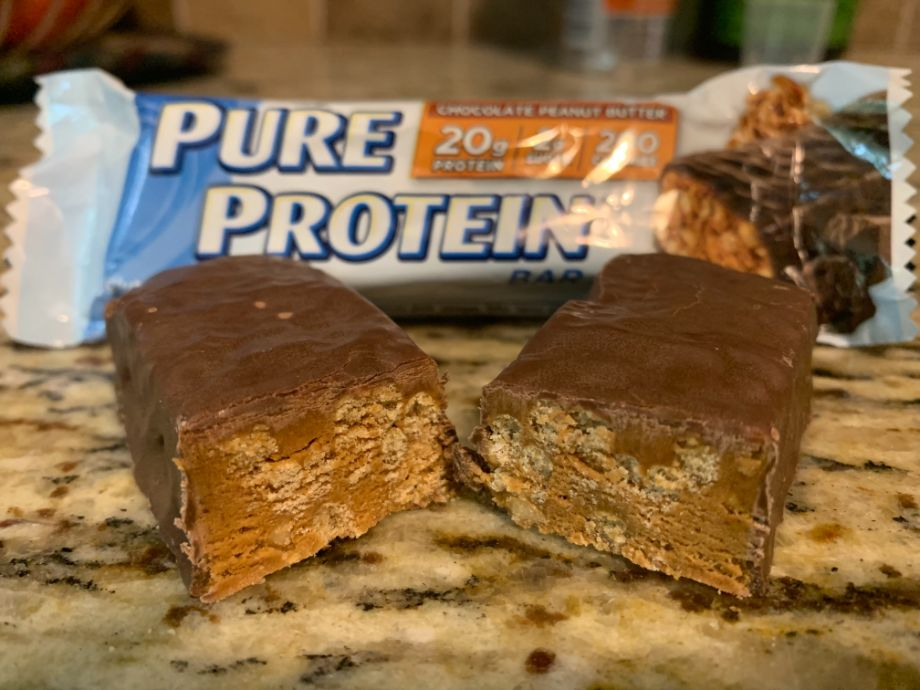A problem I’ve noticed when discussing sports nutrition and dietary supplements is that many believe more is better. More protein, beta-alanine, and amino acids equals more benefits, right? Well, not entirely.
When it comes to creatine, like everything else, it’s important to be sure you’re not taking more than you need. Whether you’re taking the minimum effective dose of 3 grams or taking 20 grams daily as part of a creatine loading phase, there are limits to consider.
That said, creatine is an organic compound, so is it even possible to take too much of it? How much is too much, according to science? And what is the best creatine dosage? As an RD, I’m here to answer those questions and more so you can dial in your creatine intake.
Medical disclaimer: This article is intended for educational and informational purposes only. It is not intended as a substitute for medical advice. For health advice, contact a licensed healthcare provider.
Short Answer: Can You Take Too Much Creatine?
The short answer is probably not, except in extreme cases. So, yes and no.
I’ll elaborate:
Long Answer
No, in the respect that no long-term studies have shown any life-threatening or permanent side effects to taking large doses of creatine. One study conducted on Division I college football players had them taking up to 10 grams of creatine daily1 for 21 months, and they experienced no adverse effects.
Another study had highly trained athletes take 5 to 20 grams of oral creatine every day for up to 5 years to investigate the belief that creatine causes kidney damage when supplemented in high doses. They saw no change in kidney function2 nor any other adverse effects except for one subject who experienced muscle cramps and another who got a headache. However, scientists were unable to confirm these effects were caused by the oral creatine supplementation.
RELATED: How Long Does Creatine Stay In Your System?
In addition, there has been a myth floating around that too much creatine can cause rhabdomyolysis (aka rhabdo), a potentially fatal condition caused by the breakdown of muscle tissue in the blood that results in kidney damage, among other conditions.
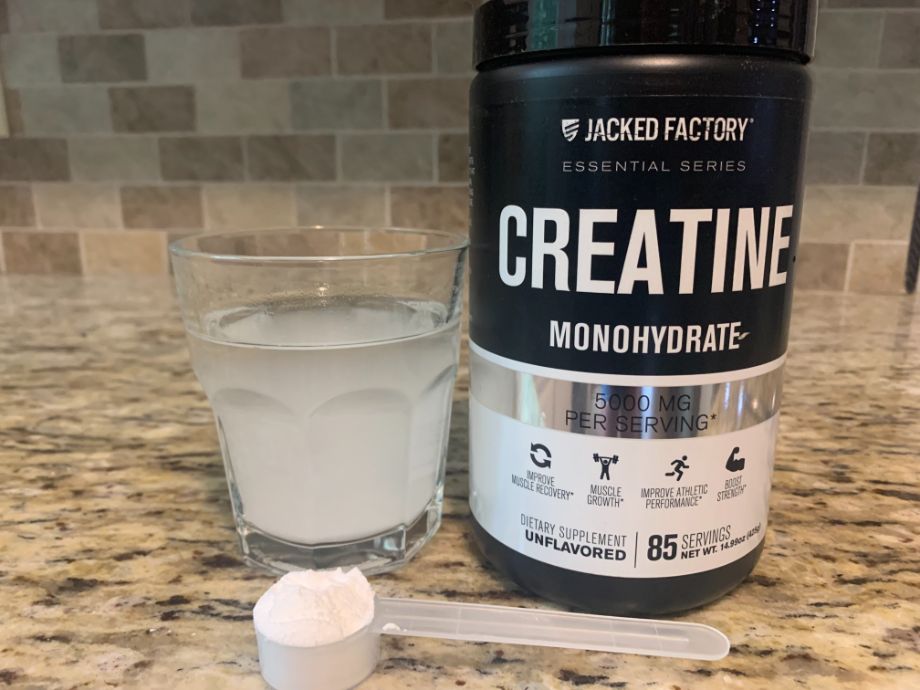
The myth started after three college wrestlers experienced fatal rhabdo after going to extreme weight loss measures to meet their desired weight class. Creatine was implicated in their loss of life because healthcare professionals saw high levels of creatinine, a byproduct of creatine, in the blood of these athletes, and high creatinine is a major sign of rhabdomyolysis. Despite all of this, recent studies have shown that creatine cannot cause this dangerous condition3, even at high doses.
Now, let’s get to the yes of “Can you take too much creatine?” You can when you consider high doses of creatine can be a waste. Studies show you only need 3 to 5 grams4 of daily, long-term creatine supplementation to keep muscle cells sufficiently saturated. Anything extra will just be excreted in your urine since the body only has limited storage space for phosphocreatine, which makes for some pretty expensive pee.
RELATED: How to Use Creatine
So, What is Creatine?
Creatine is synthesized from various amino acids that naturally occur in the body, which is probably why the body has so little potential to react negatively to excess creatine. Although creatine is one of the most popular supplements among bodybuilders and individuals who consistently lift weights, people can also obtain it from animal foods like red meat.
RELATED: Foods with Creatine
However, to get the same amount of creatine as 5 grams of creatine monohydrate powder, you would have to eat about 4 to 5 pounds of meat each day—not ideal from an economic or practical standpoint. So now you can understand why most people get their creatine from supplements.
Phosphocreatine is a compound that composes most of the creatine stored in the skeletal muscle. Adenosine triphosphate, or ATP, is the body’s energy source and is produced in your cells’ mitochondria. As you can probably imagine, ATP is a great thing to have abundantly available for optimal exercise performance.
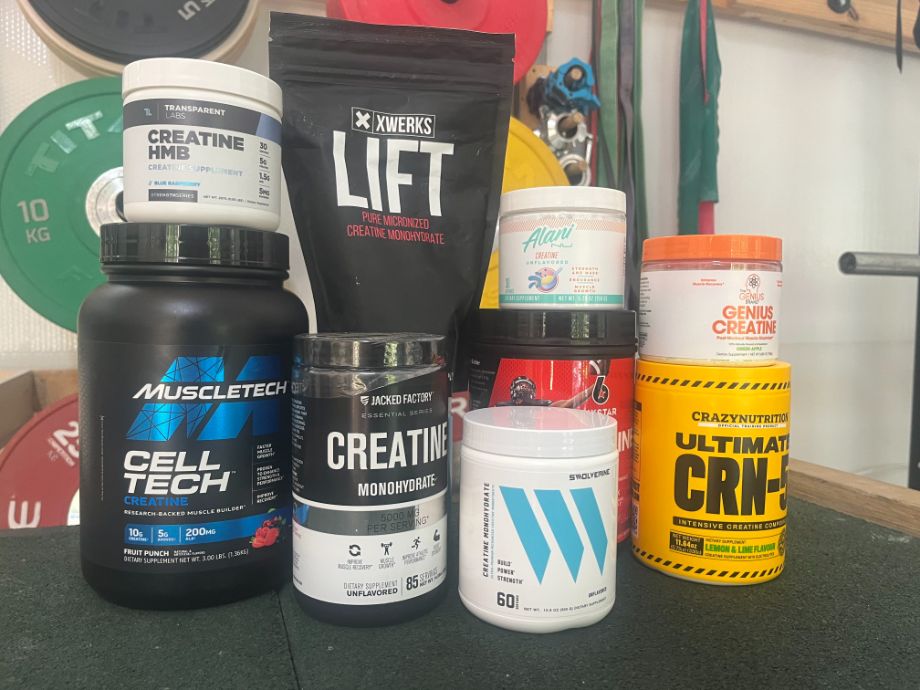
A phosphate group is removed from ATP (adenosine triphosphate) when it’s consumed for energy and is turned into ADP (adenosine diphosphate) as a result. To prevent muscle fatigue, ADP must get that phosphate group back since ADP can’t be used for energy.
Supplementing with the proper daily dose of creatine raises phosphocreatine in the cells. If there’s enough phosphocreatine, it can donate its phosphate molecule to ADP to make it ATP again. This is how creatine supplementation can provide enough energy5 needed to boost exercise performance during high-intensity exercise. Hooray science!
There’s much more to the effects of creatine supplementation than creating more energy. Creatine monohydrate also plays a role in putting on muscle mass, improving athletic performance, and helping change body composition.
RELATED: Best Creatine
Creatine Dosage
The International Society of Sports Nutrition6 recommends a daily dose of 3 to 5 grams of creatine to maintain your creatine levels, and 5 grams of creatine has been accepted as the universal maintenance dose. However, there may be some situations, such as during creatine cycling, where higher doses may be taken.
Creatine Loading Dosage
Some believe that altering their creatine doses every few weeks—aka cycling—can speed up and even amplify the benefits of creatine. Some even claim that if you don’t cycle, you’ll lose any exercise performance benefits you achieved while taking it.
A typical loading phase requires you to supplement with large doses of creatine, about 20 to 25 grams, for up to seven days. This may strike some as a dangerous amount of creatine, but the available research shows that creatine loading is generally safe.
However, to minimize the potential for stomach upset, it’s best to break up your intake in 5-gram increments throughout the day until you reach 20 to 25 grams.
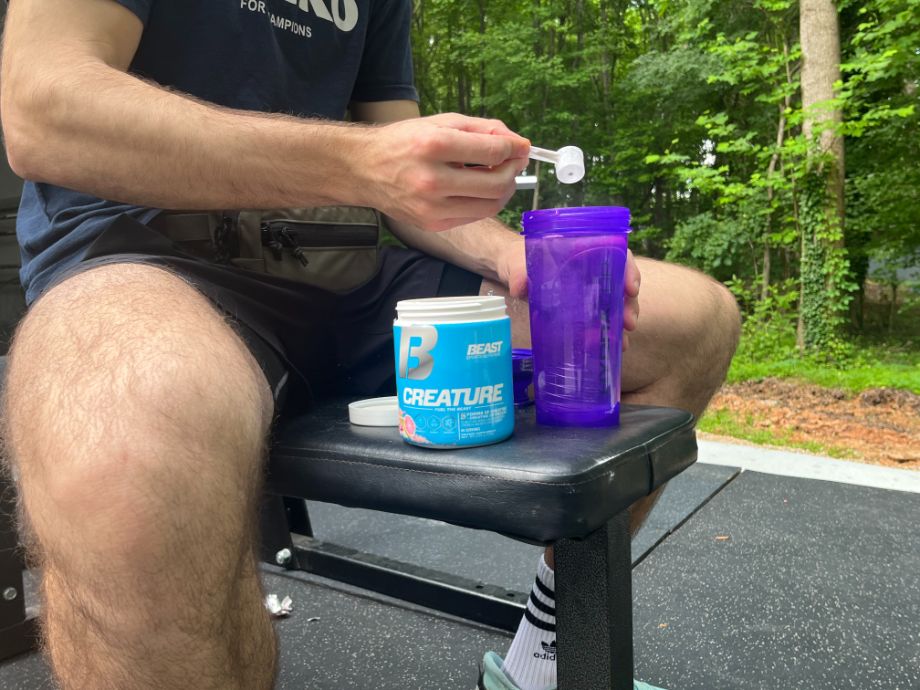
RELATED: What Is The Best Creatine Monohydrate Dosage?
So, is all of this creating loading even worth it? Studies show7 that a creatine loading phase can be helpful in the short-term, especially for athletes who need the faster athletic performance benefits you can get from the amplified creatine levels that a loading phase provides.
It’s important to know, however, that this method of dosing is by no means necessary8 to raise creatinine levels or to benefit from the effects of creatine. Whether you go through a loading phase or just take the lower dose doesn’t make a big difference for long-term muscle mass gains.
RELATED: How Long Does It Take Creatine to Work?
Potential Side Effects of Creatine
With great power comes great responsibility, so of course, there are some potential side effects of creatine. Most are harmless or only occur when you take more than the recommended daily dose, but it’s still important to know the risks. Here are some creatine side effects to be aware of.
Water Retention
A property of creatine is that, to promote muscle growth, it pulls water into muscle cells as it builds up. When taking this dietary supplement for the first time or during the creatine loading phase, the amount of intramuscular water increases dramatically. However, try not to be alarmed as this water retention is harmless and will wear off once the body becomes used to your creatine supplementation.
RELATED: How Much Water Should You Drink with Creatine?
Temporary Weight Gain and Bloating
When people first begin using creatine, they are often shocked by how much body mass they put on very quickly.
RELATED: Does Creatine Make You Bloated?
However, studies have shown that, while creatine is proven to help build muscle, it has no effect on fat mass and can even stimulate fat loss. In short, this increase in body weight is not from fat, but the bloating can make accurate body weight tracking confusing.

Stomach Upset
Probably the biggest threat of taking too much creatine at once is that it can result in stomach discomfort. For instance, one study had athletes take 10 grams of creatine in a single serving, and the subjects experienced diarrhea, stomach upset, and excess gas. However, those who supplemented with a 2- to 5-gram dose did not report the same side effects9.
RELATED: Can You Dry Scoop Creatine?
There’s a lesson to be learned from this research, especially if you’re contemplating a loading phase. If you want to avoid any of these nasty-sounding side effects, you need to break up your creatine intake. It may also help to drink plenty of water and take your creatine with food or your whey protein shake for better tolerance.
Who Shouldn’t Take Creatine
You shouldn’t take creatine in any dosage if you have heart, liver, or kidney disease. You’ll also want to consult a healthcare professional if you take prescription medications, as you may be at risk of dangerous interactions between creatine and certain medications.
Benefits of Creatine
When taken in the recommended doses, there’s an appealing set of fitness and health benefits associated with creatine supplementation. Here are four creatine benefits for your consideration:
Helps Support Building Lean Body Mass
It’s probably safe to say that creatine is most known in the fitness community for its ability to support changes in body composition5. It does this by increasing body mass through skeletal muscle growth, particularly when combined with a well-constructed resistance training program.

RELATED: Best Supplements for Muscle Growth
May Help Improve Muscle Recovery
Creatine is counted among the best muscle recovery supplements because it supports both muscle recovery and a reduction in soreness by generating more energy from ATP in the muscle cells. What this means is creatine allows you to continue performing high-intensity exercise even when your muscles are sore, which can result in better performance10.
Useful for Vegetarians and Vegans
In whole foods, creatine in its natural form is found most abundantly in animal products like red meat and seafood. This poses a problem for vegans and vegetarians who want to experience the effects of creatine supplementation but don’t want to compromise their dietary preferences.
Given creatine supplements are vegan-friendly, they can be an alternative to whey protein and animal foods. Studies also show that vegetarians have lower creatine stores than omnivores and may even get brain health benefits in the form of better memory11 from creatine supplementation.
Beneficial for Older Adults
Our ability to build muscle and muscle mass declines as we age. This is a natural, unavoidable process that starts to occur as early as age 30.

In addition to ameliorating these effects and improving muscle mass, creatine supplementation can also help improve the quality of life in older adults. Small muscle size and lower levels of muscle mass are associated with a higher risk of falls and limited mobility in older adults12.
Finally, though more research is needed, new science suggests that creatine supplementation can help mitigate the decline of cognitive function13 in older adults.
Can You Take Too Much Creatine? Final Thoughts
Creatine has been thoroughly studied for efficacy and is one of the safest dietary supplements you can take due to its composition of amino acids, which are natural, organic compounds.
In a nutshell, as a healthy adult, you’d have to be really, really trying to get some unfavorable side effects for creatine supplementation to be dangerous. That said, you can still experience some unpleasant effects of overdoing your use of creatine, such as GI distress, stomach cramps, and diarrhea. When taken responsibly, however, creatine has a host of beneficial effects. If you are still concerned about whether or not creatine is safe for you, consult your healthcare provider.
Can You Take Too Much Creatine? FAQs
Is it OK to take 10 grams of creatine at once?
While some may tolerate higher amounts better than others, taking 10 grams of creatine at once isn’t necessary. With safety in mind, the optimal recommended dose of 3 to 5 grams of creatine at a time is sufficient.
Can I take 20 grams of creatine at once?
I wouldn’t. If you’re doing an optional loading phase with creatine, taking 20 grams of creatine broken up into 4 to 5 doses (totaling 20 grams throughout the day) is recommended.
Is it bad to take creatine multiple times a day?
It’s perfectly fine to take creatine multiple times a day As long as you’re not taking more than the recommended daily dose. Just be sure not to exceed 10 grams of creatine in one sitting or more than 20 grams of creatine per day.
These statements have not been evaluated by the Food and Drug Administration. This product is not intended to diagnose, treat, cure, or prevent any diseases.
References
- Kreider RB, Melton C, Rasmussen CJ, et al. Long-term creatine supplementation does not significantly affect clinical markers of health in athletes. Mol Cell Biochem. 2003;244(1-2):95-104.
- Poortmans JR, Francaux M. Long-term oral creatine supplementation does not impair renal function in healthy athletes. Med Sci Sports Exerc. 1999;31(8):1108-1110. doi:10.1097/00005768-199908000-00005
- Rawson ES, Clarkson PM, Tarnopolsky MA. Perspectives on Exertional Rhabdomyolysis. Sports Med. 2017;47(Suppl 1):33-49. doi:10.1007/s40279-017-0689-z
- Kreider RB, Kalman DS, Antonio J, et al. International Society of Sports Nutrition position stand: safety and efficacy of creatine supplementation in exercise, sport, and medicine. J Int Soc Sports Nutr. 2017;14:18. Published 2017 Jun 13. doi:10.1186/s12970-017-0173-z
- Wu SH, Chen KL, Hsu C, et al. Creatine Supplementation for Muscle Growth: A Scoping Review of Randomized Clinical Trials from 2012 to 2021. Nutrients. 2022;14(6):1255. Published 2022 Mar 16. doi:10.3390/nu14061255
- Kreider RB, Kalman DS, Antonio J, et al. International Society of Sports Nutrition position stand: safety and efficacy of creatine supplementation in exercise, sport, and medicine. J Int Soc Sports Nutr. 2017;14:18. Published 2017 Jun 13. doi:10.1186/s12970-017-0173-z
- Antonio J, Candow DG, Forbes SC, et al. Common questions and misconceptions about creatine supplementation: what does the scientific evidence really show?. J Int Soc Sports Nutr. 2021;18(1):13. Published 2021 Feb 8. doi:10.1186/s12970-021-00412-w
- Hultman E, Söderlund K, Timmons JA, Cederblad G, Greenhaff PL. Muscle creatine loading in men. J Appl Physiol (1985). 1996;81(1):232-237. doi:10.1152/jappl.1996.81.1.232
- Ostojic SM, Ahmetovic Z. Gastrointestinal distress after creatine supplementation in athletes: are side effects dose dependent?. Res Sports Med. 2008;16(1):15-22. doi:10.1080/15438620701693280
- Volek JS, Ratamess NA, Rubin MR, et al. The effects of creatine supplementation on muscular performance and body composition responses to short-term resistance training overreaching. Eur J Appl Physiol. 2004;91(5-6):628-637. doi:10.1007/s00421-003-1031-z
- Benton D, Donohoe R. The influence of creatine supplementation on the cognitive functioning of vegetarians and omnivores. Br J Nutr. 2011;105(7):1100-1105. doi:10.1017/S0007114510004733
- Candow DG, Forbes SC, Chilibeck PD, Cornish SM, Antonio J, Kreider RB. Effectiveness of Creatine Supplementation on Aging Muscle and Bone: Focus on Falls Prevention and Inflammation. J Clin Med. 2019;8(4):488. Published 2019 Apr 11. doi:10.3390/jcm8040488
- Rawson ES, Venezia AC. Use of creatine in the elderly and evidence for effects on cognitive function in young and old. Amino Acids. 2011;40(5):1349-1362. doi:10.1007/s00726-011-0855-9


